
Roughly a century and a half ago, Lancaster County, Pennsylvania operated some of the most important metal-producing mines in the eastern U.S. Ore deposits containing nickel, chromium, and silver-enriched lead (argentiferous galena or lead sulfide) were extracted from three widely dispersed sites: the Gap Nickel Mine (on the eastern side of the county); Wood’s Chrome Mine (along the southern border of the county and state); and the Pequea Silver Mines (located about seven miles south of downtown Lancaster), respectively. Documentary evidence supports the occurrence of mining activity at Pequea by at least 1709, making it perhaps the nation’s oldest mining site that dates from Colonial times. But early colonists had learned of the presence of lead ore from Native Americans, who might have worked the site during the previous century.
Today, however, little remains in place at these formerly extensive mining sites. While rather detailed histories have been published concerning the first two mines mentioned above, the same cannot be said regarding the third. Nonetheless, the former site of the Pequea (pronounced “peck-way”) Silver Mines was turned into a public (i.e., township) park in the late 20th century. Also, a self-guided, geological walking tour was established that enables visitors to view the mines’ principal entrance portal and also study the surrounding geology. The public can discover for themselves what dramatic changes this landscape experienced in the distant past.
This story is from the September 2020 edition of Rock&Gem Magazine.
Start your 7-day Magzter GOLD free trial to access thousands of curated premium stories, and 8,500+ magazines and newspapers.
Already a subscriber ? Sign In
This story is from the September 2020 edition of Rock&Gem Magazine.
Start your 7-day Magzter GOLD free trial to access thousands of curated premium stories, and 8,500+ magazines and newspapers.
Already a subscriber? Sign In
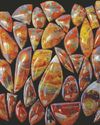
MORGAN HILL POPPY JASPER
In California, there are very few places to collect semi-precious stones. Many locations from the past have been either exhausted of the material or the land has been developed.
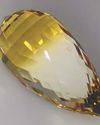
THE ACORN
The briolette gemstone has the same design attributes of a regular gemstone, however, the pavilion is elongated and the crown is usually domed. This is perfect for an elegant pendant, earrings or a pendulum.
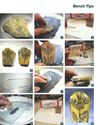
HOW TO PUT A PROTECTIVE CAP ON A CAB
To protect a specimen cab, often a cap is needed. In my case, I had a slab with the because of the color of the background and the pattern. This background had a more silicified consistency than most sandstones. It had no graininess like most sandstone, so I'm inclined to compare it to a jasper. The pattern was typical of a dendrite.

The Resilient Revival of Anne Brontë & Her Stones
For the first time, the Anne Brontë rock collection underwent complete description and identification, and along with Professor Hazel Hutchison of Leeds University and Dr. Enrique Lozano Diz at ELODIZ (a company specializing in spectroscopy analysis), an analysis of that collaboration, Anne Brontë and Geology: A Study of her Collection of Stones, was published in April 2022 in Volume 47, Issue 2 of the peer-reviewed journal, Brontë Studies & Gazette.\"

Amazing Women with Rock-Solid Careers
Explorers, Geologists, Educators & Jewelry Makers...
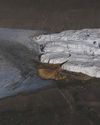
The Case of the Bleeding Glacier
It's a gory sight called Blood Falls. Ever since British geologist Thomas Griffith Taylor first noted it in 1911, it has been a mystery.
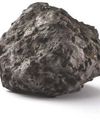
Asteroid Samples Are Said to Hold Invaluable Secrets
If Only Scientists Can Pop the Lid!
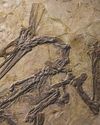
Paleontologists Embrace a New Method for Seeing Fossils within Rock
Fossil bone can be delicate. Attempts to remove it from a hard rock matrix by picking and scratching or etching with acids can be time-consuming and/or may end up obliterating that which you hope to study.

Need a Map of the Ocean Floor?
Call in the Seals!

A Step Closer to Hydrogen, the "Climate-Friendly Fuel"
As I reported last June, the world is racing to find sustainably renewable, nonpolluting sources of energy to replace our carbon-based reserves of coal, oil and gas.